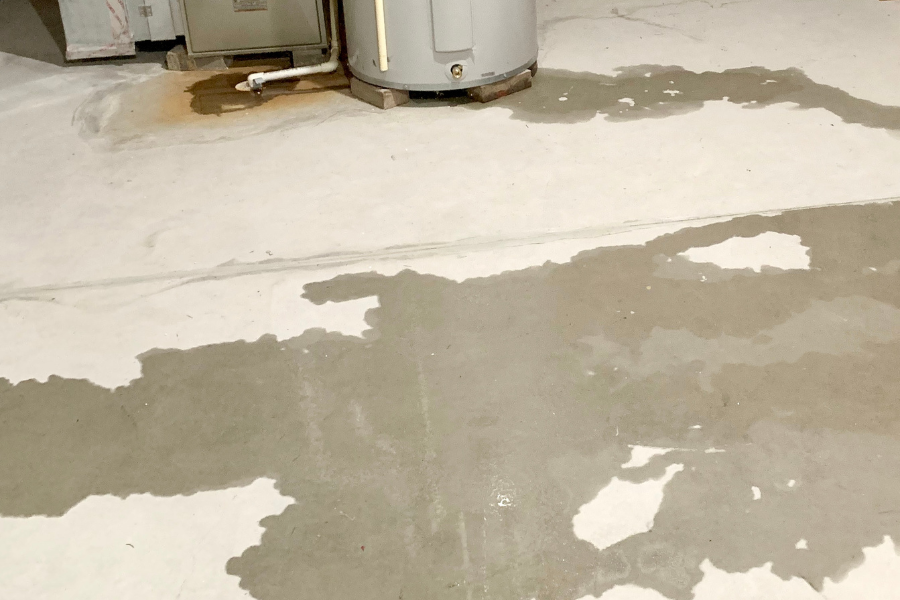At Basement Remedy, we know exactly what time of year our phones start ringing off the hook—and it’s not a mystery. Spring rains in Ohio are no joke, and for many homeowners, they bring water problems that have been quietly building all winter.
But here’s the good news: most spring basement leaks are preventable with a little preparation.
If you want to avoid flooding, mold, and unexpected repair bills, here’s what we recommend you do before the rainy season kicks into full gear.
1. Check Your Downspouts and Gutters
This is the #1 cause of water in basements, hands down. If your gutters are clogged or your downspouts aren’t extended far enough from the house, you’re inviting water to sit at the foundation—and eventually find a way inside.
What to do:
- Clean out all gutters and remove debris
- Make sure downspouts are discharging at least 6-10 feet from the house
- Add or repair underground drainage lines if needed
- Walk the perimeter during a light rain and watch where the water flows
If it’s pooling near the walls, that’s a problem.
2. Test Your Sump Pump—Yes, Really
Your sump pump shouldn’t be a mystery machine in the corner. It’s a critical piece of your basement defense system, and if it’s not working when you need it, you’re in for trouble.
How to test it:
- Lift the float to see if the pump kicks on
- Pour water into the pit and make sure it pumps it out
- Clear the discharge line and make sure it’s not frozen or blocked
- Consider a battery backup in case of power outages
We recommend testing quarterly, and spring is the most important time of year to do it.
3. Look for Warning Signs Inside
Walk around your basement and check for the following:
- Discoloration or yellow spots on walls
- Peeling paint or bubbling drywall
- Efflorescence (white powdery residue on block walls)
- Musty smells or areas of dampness
- Cracks in the walls or floor
Even if you don’t see water, these are signs that moisture is coming through—and spring rain will only make it worse.
4. Move Valuables Off the Floor
Even if your basement has never flooded before, don’t assume this year will be the same. One big storm or field tile backup could change everything.
Pro tips:
- Elevate boxes, electronics, and furniture
- Use plastic storage bins instead of cardboard
- Don’t store valuables right up against foundation walls
- Keep a clear path to the sump pit for easy access
5. Get a Professional Inspection
Here’s the part most homeowners skip—and regret.
We offer free inspections for a reason. We’ll take a look at your home’s drainage setup, foundation, sump system, and any signs of moisture or mold risk. Even if you don’t need work done, you’ll walk away with peace of mind—and a plan.
Too many people wait until there’s standing water. By then, the damage is already done.
Bonus: Don’t Rely on Paint to Save You
A quick coat of waterproof paint before spring might look like a solution—but it’s not. That stuff doesn’t stop water from getting in. It just traps it inside your walls, where it quietly causes more damage.
If you want to protect your basement, paint is not the answer. Real waterproofing is.
Spring Rains Don’t Wait—Neither Should You
Every spring, we get emergency calls from homeowners dealing with:
- Flooded finished basements
- Ruined storage and furniture
- Mold infestations
- Foundation cracks
- Burned out sump pumps
And the worst part? In most cases, they could’ve avoided it with a little prep.
Let’s get ahead of the storm. Basement Remedy can help you make sure your home is ready.
Searching online for:
- “how to stop basement flooding in spring”
- “prepare for heavy rain in Ohio”
- “sump pump spring maintenance”
- “how to keep water out of basement this season”
We’ve got your back. Let’s protect your home before the first drop hits.




Leave a Reply